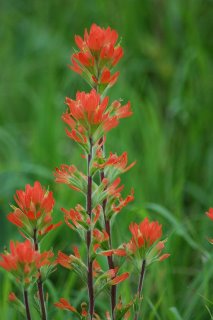

Who knew life could be this much fun?


 veral years, but each new birth in our mixed herd revives her mothering instincts. She's become the herd midwife, so to speak. She's present for the birth, helps clean up the babies, and helps deal with the afterbirth. She might even murmur encouragement throughout the long labor for all I know. Or those soft baas might be something less complimentary. Who knows? She's also a formidable protector, much to the dismay of the three farmcollies, who'd really like to lick the babies and stand guard over them, too. And the rest of the small herd? They hovered close, creating a 'safe zone' that no dog shall pass.
veral years, but each new birth in our mixed herd revives her mothering instincts. She's become the herd midwife, so to speak. She's present for the birth, helps clean up the babies, and helps deal with the afterbirth. She might even murmur encouragement throughout the long labor for all I know. Or those soft baas might be something less complimentary. Who knows? She's also a formidable protector, much to the dismay of the three farmcollies, who'd really like to lick the babies and stand guard over them, too. And the rest of the small herd? They hovered close, creating a 'safe zone' that no dog shall pass. Just down the road there's a patch of prairie, blooming with native flowers. It's owned by a friendly neighbor who doesn't mind me wandering about, snapping photos. About a week ago, the Indian Paintbrush hit it's prime, and its bright splashes of color dominated the field. This week, the yellows and blues are gradually taking over.
Just down the road there's a patch of prairie, blooming with native flowers. It's owned by a friendly neighbor who doesn't mind me wandering about, snapping photos. About a week ago, the Indian Paintbrush hit it's prime, and its bright splashes of color dominated the field. This week, the yellows and blues are gradually taking over.
 can't cover the nasty odor from Bebe's most recent skunk encounter. She tried rubbing it off in the grass, rolling in the straw, and rolling in the creek. Late yesterday afternoon she finally settled down to pout under this creekside patch of wild roses.
can't cover the nasty odor from Bebe's most recent skunk encounter. She tried rubbing it off in the grass, rolling in the straw, and rolling in the creek. Late yesterday afternoon she finally settled down to pout under this creekside patch of wild roses.
